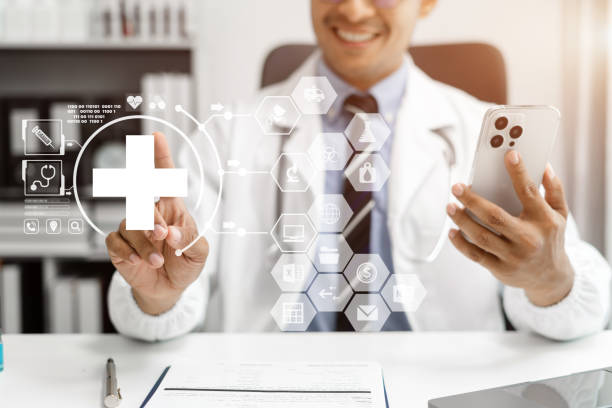Table of Contents
Transforming medical care through innovation is revolutionizing patient interaction and practice efficiency, paving the way for a more seamless, effective healthcare experience for both patients and providers alike.
# 1. Digital Health Records and Telemedicine
The integration of digital health records and telemedicine has significantly improved patient interaction. EHRs provide an organized, accessible database of patient information, streamlining administrative processes and reducing errors. Telemedicine, especially during the COVID-19 pandemic, offers remote consultations, boosting patient satisfaction and compliance. It also allows for continuous monitoring of chronic conditions, improving long-term health outcomes and operational efficacy in medical practices.
# 2. AI and Machine Learning in Diagnostics
Digital health records and telemedicine have enhanced patient interaction, streamlining administrative processes and reducing errors. Telemedicine, particularly during the COVID-19 pandemic, offers remote consultations, boosting patient satisfaction and compliance, and enabling continuous chronic condition monitoring.
# 3. Wearable Technology and Remote Monitoring
Wearable technology and remote monitoring are at the forefront of transforming patient care by enabling continuous health monitoring outside the clinical setting. Devices such as smartwatches, fitness trackers, and specialized medical wearables collect real-time data on vital signs, physical activity, sleep patterns, and more. This data is invaluable for both patients and healthcare providers. For patients, wearable technology offers a proactive approach to managing their health, providing insights into their daily habits and encouraging healthier lifestyles. For healthcare providers, the data obtained through these devices facilitates early detection of potential health issues, allows for ongoing management of chronic conditions, and enables more personalized care plans. Remote monitoring systems are particularly beneficial for elderly patients and those with chronic diseases who require regular supervision. These systems can monitor heart rate, blood pressure, glucose levels, and other critical parameters, sending alerts to healthcare providers if readings fall outside of normal ranges. This immediate feedback loop can prevent complications, reduce hospital readmissions, and improve overall patient outcomes. Additionally, the data collected through wearable technology can be integrated into EHR systems, further enhancing the continuity and quality of care. Thus, wearable technology and remote monitoring are essential components of a modern, efficient healthcare system.
# 4. Patient Portals and Mobile Health Apps
Patient portals and mobile health apps have become indispensable tools for enhancing patient engagement and practice efficiency. Patient portals provide a secure online platform where patients can access their health information, schedule appointments, request prescription refills, and communicate with their healthcare providers. These portals empower patients to take an active role in their healthcare, leading to better adherence to treatment plans and improved health outcomes. They also reduce administrative burdens on healthcare staff by automating routine tasks and facilitating easier communication. Mobile health apps take this engagement a step further by offering a convenient, user-friendly interface accessible through smartphones and tablets. These apps can track various health metrics, provide medication reminders, offer educational content, and even support telehealth services. For example, a diabetes management app might allow a patient to log their blood sugar levels, receive feedback on their diet, and communicate directly with their endocrinologist. Such features not only improve patient self-management but also provide valuable data to healthcare providers, aiding in more informed decision-making. Furthermore, mobile health apps can integrate with wearable devices, creating a comprehensive ecosystem of patient health data. By leveraging patient portals and mobile health apps, healthcare practices can enhance patient satisfaction, streamline operations, and ultimately deliver higher-quality care.
# 5. Robotics and Advanced Surgical Techniques
Robotics and advanced surgical techniques are reshaping the landscape of medical procedures, offering unprecedented precision and improved patient outcomes. Robotic surgery, for instance, allows surgeons to perform complex procedures with enhanced accuracy, flexibility, and control. Systems like the da Vinci Surgical System utilize robotic arms, cameras, and computer consoles to perform minimally invasive surgeries, which have numerous benefits over traditional methods. Patients typically experience less pain, reduced blood loss, shorter hospital stays, and quicker recoveries. For surgeons, robotic systems offer high-definition, 3D visualization of the surgical site, eliminating the limitations of the human eye and hand. Additionally, robotics can assist in other medical tasks such as repetitive lab work, medication dispensing, and patient transport, thus increasing operational efficiency. Advanced surgical techniques, including laparoscopic and laser surgeries, further contribute to improved patient care. These techniques allow for smaller incisions, precise targeting of treatment areas, and minimized damage to surrounding tissues. Innovations like 3D printing are also making headway, providing custom implants and prosthetics tailored to individual patient anatomical requirements. Gene editing technologies, such as CRISPR, offer the potential to treat genetic disorders at their source, ushering in a new era of personalized medicine. As these technologies evolve, they promise to continue enhancing the precision, safety, and efficacy of medical treatments, setting new standards for patient care and practice efficiency.



